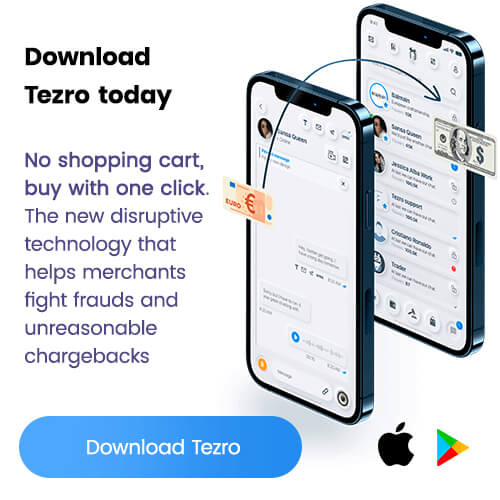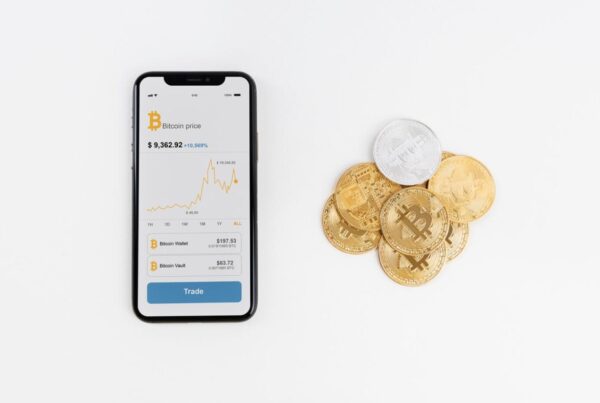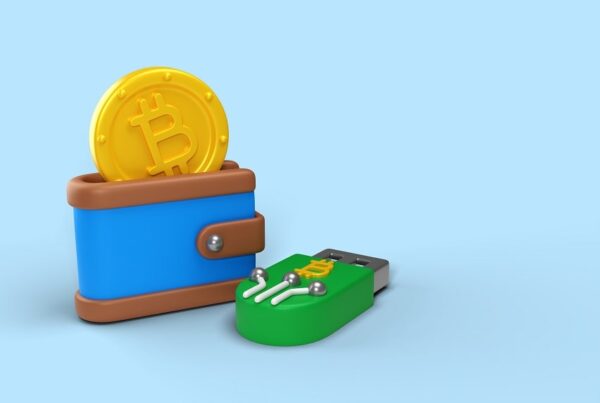What is EOS? Now that you are here, this is probably one of the questions that is running through your mind right now. Before we explore a definite answer, let us look at the cryptocurrency market as a whole. For the past decade or so, blockchain technology has taken the world by storm.
We have all witnessed tremendous growth of this technology through a plethora of blockchain platforms developed to help individuals, as well as different sectors, adopt digital currency.
By now, you have probably heard of bitcoin and the technology underlying this amazing multi-billion-dollar asset.
Even though it has been given all the credit and taken all major headlines as far as digital currency is concerned, it is not the only cryptocurrency available. There are different types of cryptocurrency in the digital currency world, and EOS is one of them.
To better understand this novice digital currency, read this comprehensive EOS crypto review to find the best answer to these questions and make informed investment decisions.
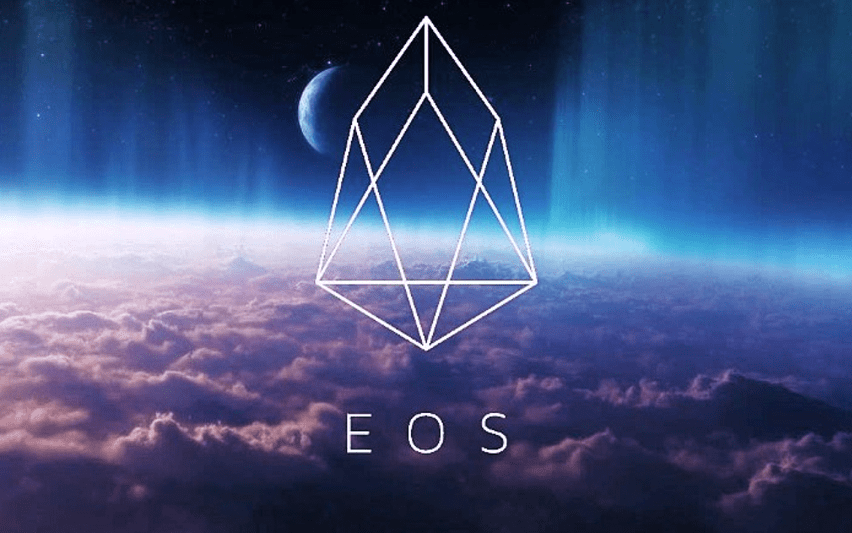
What is EOS?
Known in full as Ethernet in Sonnet, EOS is a robust blockchain-based infrastructure that enables the creation, hosting, and execution of decentralized apps. Just like Ethereum, it is a decentralized system developed to support decentralized applications (dAPPs).
What makes EOS different from Ethereum is that it is more flexible and scalable, making it easier for developers to create decentralized applications.
Like most blockchain platforms, it has its own token that is used to raise money and track usage. Access to its platform requires a developer to have a particular number of tokens that can be bought in an open market.
The main goal of the EOS project is to provide developers with essential tools needed to create full-scale applications on the EOS blockchain network.
EOS crypto aims at reinventing blockchain platforms. It uses a sophisticated technical foundation known as Delegated Proof of Stake – which is a new consensus protocol. This protocol ensures that the processing of blocks is outsourced to the delegates.
The EOS cryptocurrency, therefore, runs many applications and processes a large number of transactions. Its blockchain architecture is engineered to process thousands of transactions per second without any on-chain transaction costs.
How it works
EOS is an architecture that acts as software to enable developers to build decentralized applications while leveraging the blockchain technology.
Unlike other platforms used for dAPPs such as Ethereum, EOS doesn’t have any fee requirements. It is upgradable and features a low latency, which scales transactions to millions per second.
As mentioned earlier, EOS cryptocurrency uses the Delegated Proof of Stake (DPOS) as the sole consensus algorithm to secure the blockchain.
Unlike Proof of Stake (POS) and Proof of Work (POW) Algorithms used by most cryptos, DPOS ensures that only those holding tokens on EOS.IO software can vote for block producers.
Delegates can only produce blocks based on the number of votes they get compared to other producers.
Authorized producers can produce a block in the EOS blockchain after every three seconds. For every Block produced, they are awarded tokens instead of a transaction fee. Unlike other cryptocurrencies that rely on miners to solve complex puzzles, EOS crypto depends on people and their votes to secure the blockchain.

Understanding the EOS Tokens and EOS
The EOS ecosystem comprises of two important elements: EOS tokens and EOS.IO.
The EOS tokens are essential in powering the network. They were released using Ethereum. Anyone seeking to develop dAPPs using EOS must have EOS tokens in order to manage the demands on the network, including time, disk space, and RAM. These tokens are simply the cryptocurrency of the EOS network.
The EOS network is powered by the EOS coin, which is a claim of on-server resources. Developers use these coins to access and effectively use the EOS blockchain. It’s worth noting that a token holder who is not running any apps may choose to rent or allocate his bandwidth to others who may need them.
EOS.IO is akin to a computer’s operating system. It controls and manages the EOS blockchain network. It utilizes blockchain architecture developed to enable horizontal and vertical scaling of decentralized applications.
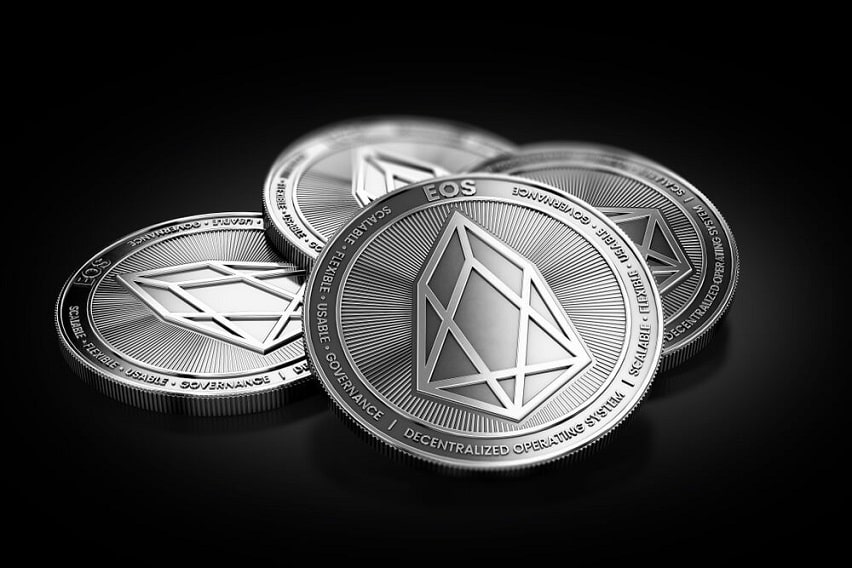
DPOS
EOS crypto meaning cannot be complete without mentioning DPOS. Known in full as Delegated Proof of Stake, DPOS is a consensus algorithm used in the EOS platform. It is designed to secure a blockchain by enhancing the representation of transactions within it.
DPOS is an implementation of tech-based democracy. It uses the voting and election process to safeguard the EOS blockchain from malicious usage and centralization.
This algorithm was developed by Daniel Larimer, an American cryptocurrency entrepreneur, software developer, and founder of EOS.IO, BitShares, and Steemit software.
He planned it as a more flexible and scalable alternative to classic consensus algorithms. When using it, every Block is validated to avoid excessive use of energy and computing power. DPOS ensures all transactions are performed relatively fast on all stages of the network’s development.
A Brief History Of EOS
EOS crypto is one of the top digital currencies in terms of market capitalization. It is unique in its own making and is backed by an interesting history. EOS.IO ICO was first published on June 1, 2017 and ran until June 1, 2018.
This makes it one of the longest ICOs in the history of cryptocurrency. Additionally, it became one of the most successful cryptos since it made $4 billion during this period. In October 2019, however, Block.One, the company that owns EOS, was fined $26 million for running an unregistered initial coin offering.
Despite this scandal, EOS has grown to become one of the most sought-after cryptocurrencies in the modern market.
Pros & Cons of EOS
Pros
EOS comes with a wide range of benefits, including:
- Ease of use for developers: EOS provides developers with a broad toolkit for the development of dAPPS. Also, it features role-based permissions, database schemas, and other built-in functions that make the development of decentralized applications simple and stress-free.
- Governance: EOS’s governance structure is based on a system of mutually accepted rules. The process of modifying these rules is done through voting. Most cryptocurrencies find it difficult to reach a consensus when the need arises. With EOS, it is very easy to find a solution to any problem.
- ICO-friendly: Just like in other smart platforms such as Ethereum, crypto users can host ICO on the EOS blockchain.
- Free transactions: Most cryptocurrencies require users to pay a particular fee in every transaction. EOS uses the block-producer model to determine how fees will be charged depending on the services rendered by dAPP developers.
- Fast transactions: EOS uses parallel processing and can perform over 10,000 transactions per second.
Cons
EOS also comes with its fair share of drawbacks. They include:
- No guarantee tokens will be honored: One of the reasons why the EOS coin is so popular is because the EOS community strives to honor tokens, Block.One is not legally mandated to do so. It is, therefore, up to the users to ensure this happens.
- Potentially centralized: Even though the DOPS algorithm is built to prevent EOS’s decentralization, this cryptocurrency depends on 21 block producers to confirm all transactions. This is a point of concern because a few large resource provider data centers could run the network.
Also, users are not allowed to audit the system unless they choose to run a full node. EOS relies on voting, which often results in low voter turnout in most systems. The fact that only a few people give input on which direction the blockchain should take also makes the EOS crypto potentially centralized.
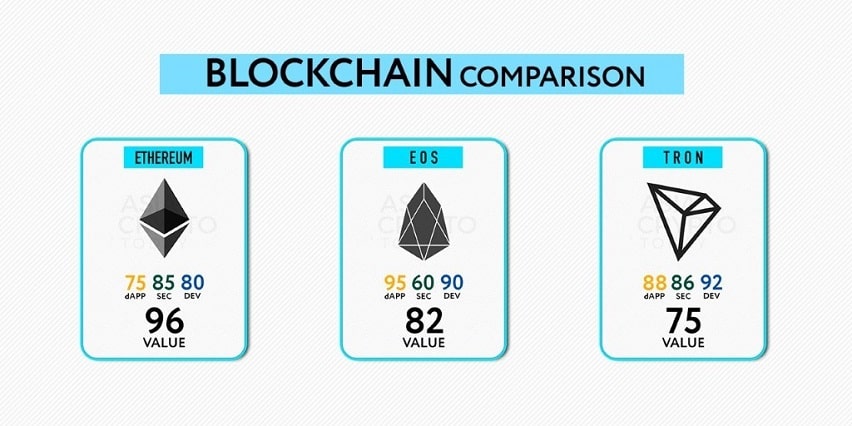
Figure 1 – Values from Feb 2019 Source: AsiaCryptoToday
Unique Features of EOS
EOS has a wide array of unique features that are designed to help developers create apps on blockchain networks. Some of these features include:
- Scalable
EOS cryptocurrency was designed with scalability in mind. This scalability is achieved by allowing parallel transaction processing that keeps the number of block procedures small, thus speeding up every process. Scalability is what created a buzz since EOS started offering tokens in 2017 until the EOS crypto launch date in 2018.
Darn Larimer, the chief technology officer of EOS crypto explained that this platform would continue to use various methods, which will enhance horizontal and vertical scaling as well as parallel smart contract execution.
- Flexible
The EOS platform is exceptionally flexible. Unlike other decentralized networks such as Ethereum, which came to a standstill after it was hit by the DAO attack, the EOS architecture is built in a manner that can help handle such problems.
In case there is a possible attack on the system, the node processing a transaction is stopped, and all the other nodes continue to operate as usual. The halted node can only process blocks once the issue in question has been handled.
- Decentralized Operating System
Other decentralized networks such as Ethereum are regarded as decentralized supercomputers. On the other hand, EOS is regarded as a decentralized operating system. This is one of the most important features of the EOS system.
- Parallel Processing
One of the reasons why the EOS network is exceptionally fast is because it uses parallel processing. This allows it to minimize the overall runtime of all processes, therefore ensuring tons of transactions are executed within seconds.
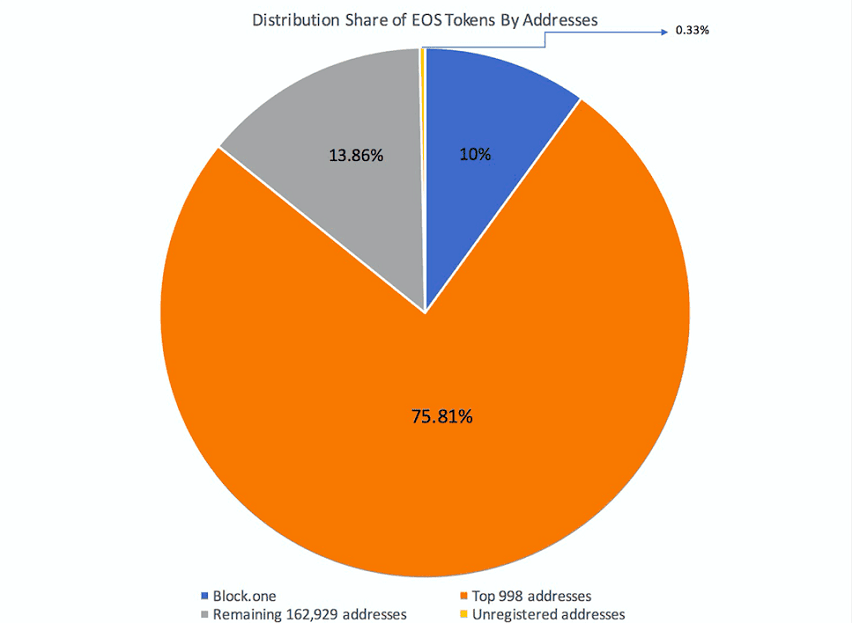
Figure 2 – Data from June 2018
Source: Investopedia
What is it used for?
After gaining a deep understanding of what is EOS, every investor needs to know how it works. EOS is arguably the most powerful infrastructure that enables the development, hosting, and deployment of commercial scale dAPPs on its platform. It supports the core functionality to enable individuals and businesses to build blockchain-based apps in a manner that is similar to web-based applications. It provides data hosting, secure access and authentication, usage management, as well as communication between dAPPs and the web.
EOS is supported by a robust web-toolkit for interface development. This enhances flawless app development. Basically, the EOS platform functions like Apple’s App Store and Google’s Play Store.
Unlike other blockchain-based networks that facilitate decentralized applications, EOS concentrates on critical pain-points of the blockchain and is often used to solve the challenges of scalability, speed, and flexibility that are common in blockchain systems.
With the dAPPs ecosystem increasing in size every passing day on a certain blockchain network, it faces a wide range of problems due to the limited availability of resources. These problems include the slow speed of execution, limited computing power, spamming apps, network constraints due to a large number of false transactions, and more. EOS is used to address these issues by providing flexibility and usability through its one-of-a-kind mechanism.
EOS can support thousands of decentralized applications without hitting performance bottlenecks. This is because it uses asynchronous communication methodology and parallel execution across the network.
Its efficiency is further enhanced by separating different modules involved in the working of commercial scale dAPPs. For instance, the authentication and execution processes are performed separately.
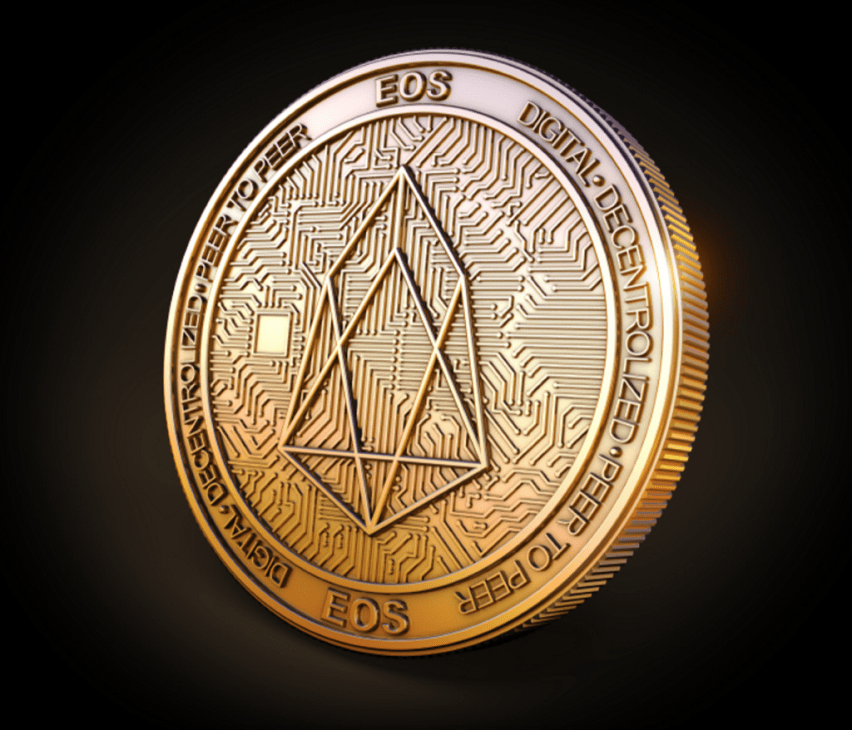
Performance
EOS is ranked 8th in the #10 crypto assets by market cap. It has a total supply of 1,024,389,871 native tokens, but only 927,689,866 are in circulation. EOS crypto potential is evident since it’s one of the few digital currencies with positive expected growth and a positive outlook.
The current prices of EOS stand at $3.50 per coin and are projected to have brought investors a return on investment of 244%.
This cryptocurrency reached its all-time high in April 2018 while major cryptocurrencies had hit theirs in December 2017 or January 2018. This means that the EOS crypto future is bright since it has the potential to reach unimaginable prices within a short time.
This cryptocurrency has the potential to disrupt industries, and the fact that it has already given investors an ROI of 244% means the future of EOS cannot be underestimated. It has an upside potential going forward and should have a spot in every investor’s portfolio. The amount of money to invest in this cryptocurrency solely depends on your personal preference and risk appetite.
Final Thoughts
Now that you understand what EOS is, you are probably thinking of investing in this digital currency. When you do, make sure you get a wallet that will enhance the safety of your investment.
We recommend TEZRO, a full-featured application that ensures you securely and conveniently store all your cryptocurrencies in a single wallet.
There are dedicated applications for Android and iOS, but you can also rely on TEZRO’s web version.








